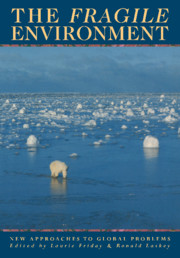4 - How many species?
Published online by Cambridge University Press: 03 May 2010
Summary
Introduction
Charles Darwin provided the essential elements of the explanation for how species originated and thus how life has evolved on earth. This work has changed forever the way educated people see themselves in relation to the rest of the natural world.
Although correct in essentials, Darwin's ideas had some major technical problems in their own time. For one thing, in the absence of the then-undiscovered nuclear forces, it can be shown that neither the sun nor (by a separate argument) the earth can be more than a few tens of millions of years old. For another thing, heritable variation is roughly halved in each generation if inheritance blends the characteristics of mother and father (as was thought to be the case in Darwin's day), making it hard to understand how such variability – the raw stuff on which selection can act – is maintained. A widespread recognition that genetic inheritance operates in a discrete, particulate way, tending to conserve variability, had to await the rediscovery of Mendel's work some 50 years later. Many other questions, including the mode and tempo of evolutionary change, the role of ‘neutral selection’ as gene frequencies drift under random statistical fluctuations, the selective advantage of sex, and other topics, remain active areas of research today. But all this work takes place within the sturdy framework erected by Darwin.
Given a basic understanding of how species originate, the next question would seem to be how we use this understanding to estimate – from first principles – how many species are likely to be found in a given region.
- Type
- Chapter
- Information
- The Fragile EnvironmentThe Darwin College Lectures, pp. 61 - 81Publisher: Cambridge University PressPrint publication year: 1989
- 6
- Cited by

